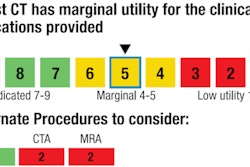Brigham and Women's Hospital pioneered the use of computerized physician order entry (CPOE) in a large hospital when it installed a system in 2000. Now, an analysis in the February Journal of the American College of Radiology shows that nearly all radiology studies performed at the hospital are being ordered with CPOE.
The Boston hospital introduced a Web-enabled CPOE system in 2000, integrating it into a radiology resource-based scheduling module. This enabled clinical staff to schedule radiology exams online at any radiology provider facility.
Access to CPOE was phased in to other parts of the enterprise over a six-year period, and by 2006, primary care physician offices, outpatient clinics, the emergency department, and inpatient units all had access. Fully integrated clinical decision-support software was added in 2006 (JACR, February 2012, Vol. 9:2, pp. 129-136).
Dr. Ivan Ip, a fellow at the Center for Evidence-Based Imaging, led a team that analyzed 4.1 million imaging studies performed between 2000 and 2010 to determine the percentage of exams that originated from physicians using CPOE. The group further analyzed usage within three time periods: the first 12 months of early adoption, the phase-in period to the entire hospital (2002 through 2006), and January 2007 through June 2010.
Adoption of CPOE rose from 0.5% in its first year, with availability limited to primary care physicians, to 94.6% in 2010, 3.5 years after rollout to the entire hospital. By 2010, more than 99% of exams ordered in the emergency department used the CPOE system. Physicians in inpatient units reported the lowest level of usage, at 90%.
Other findings included the following:
- Use of CPOE differed by the type of exam ordered, with CT and MRI exams representing the highest percentage of studies.
- In the gastroenterology, ob/gyn, orthopedics, and urology specialties, orders were more likely to be made by clinical staff and subsequently electronically signed by referring physicians than directly ordered by them.
- CT, MRI, and nuclear medicine experienced the greatest rates of growth over the decade, at 117%, 328%, and 201%, respectively.
- The number of diagnostic imaging studies performed semiannually also significantly increased.
The authors attributed the usability, accessibility, and reliability of the CPOE system to its success. Ordering physicians identified the most valuable workflow features of the CPOE system to be the integrated online scheduling module, the ability to electronically sign an order from any mobile device, and the elimination of duplicate data entry. They also liked the ability to obtain preauthorization from third-party payors.
The biggest drawback to using the CPOE system was inconvenience for some physicians, such as surgeons, who were not near computers during a portion of their workday, or if workflow was interrupted to place an order.



















